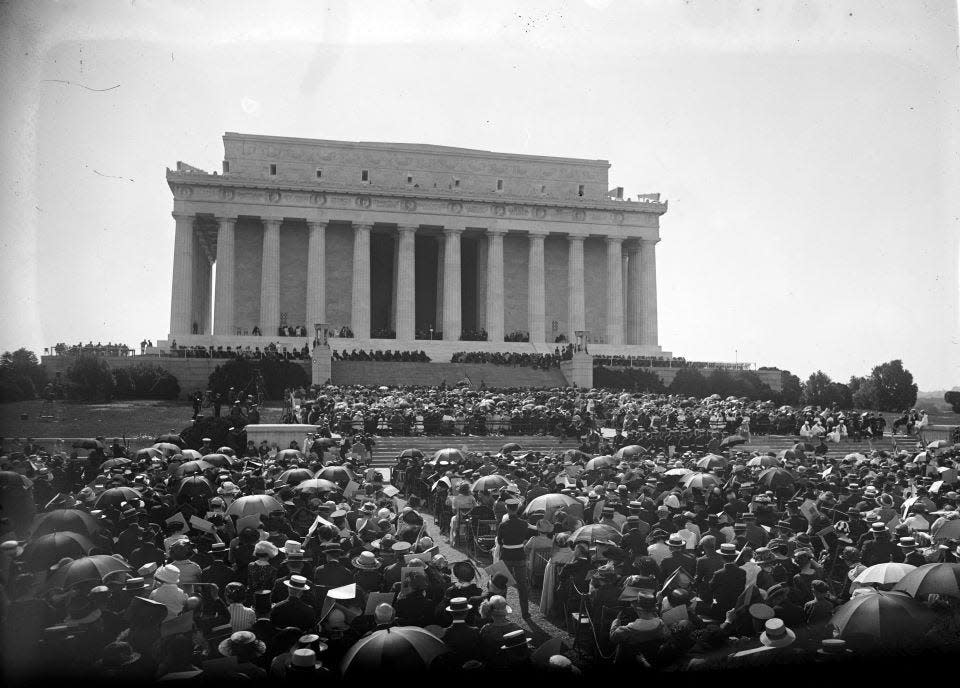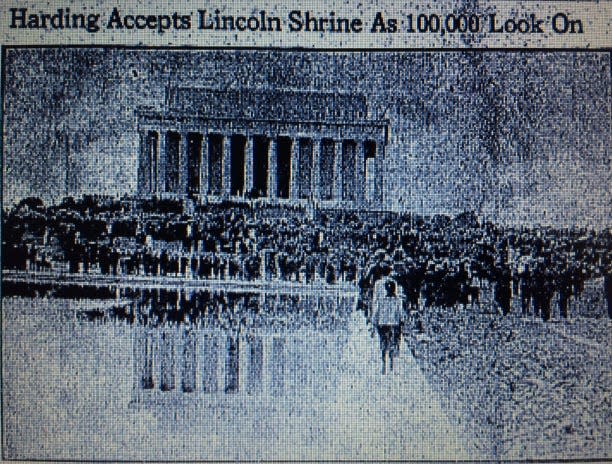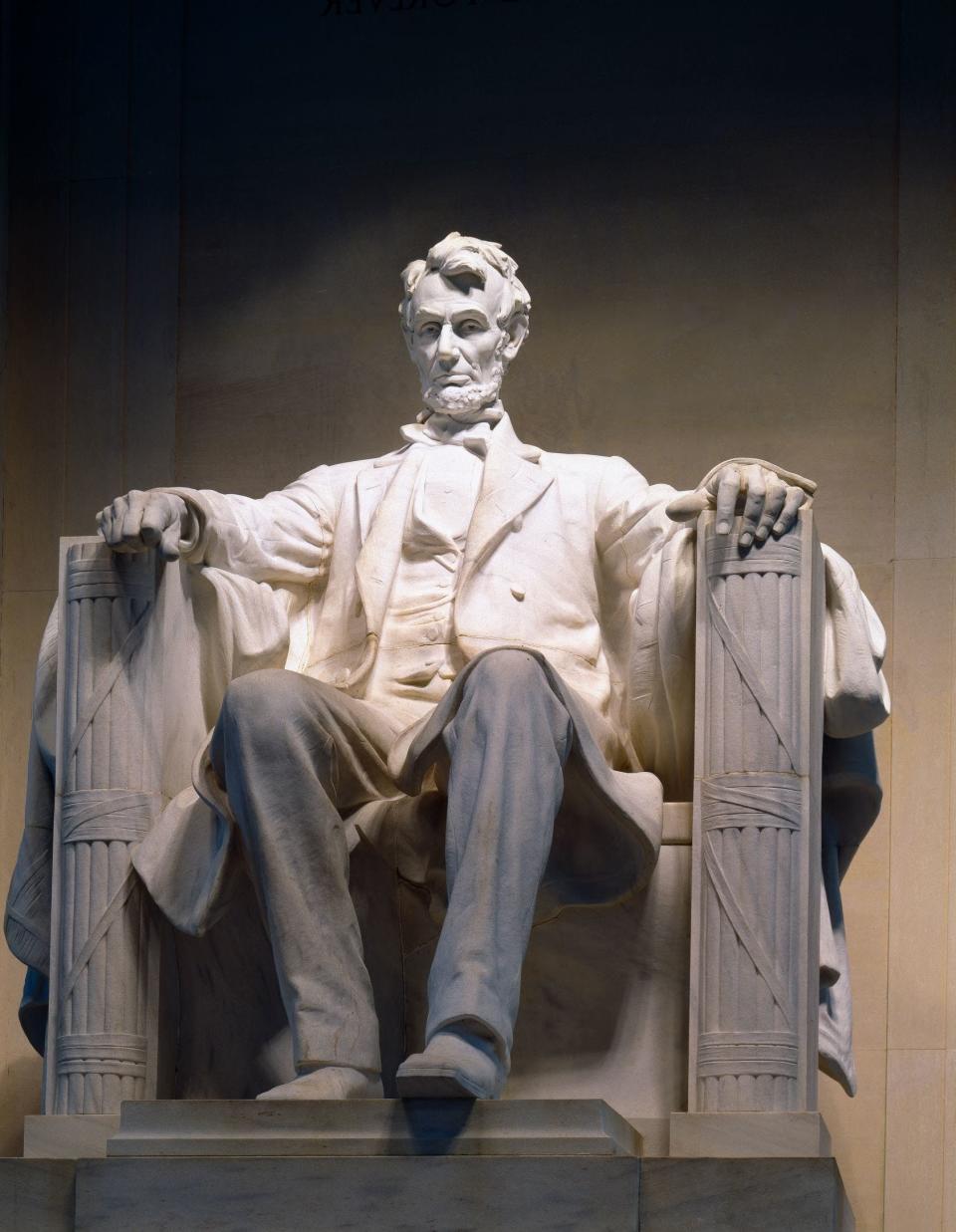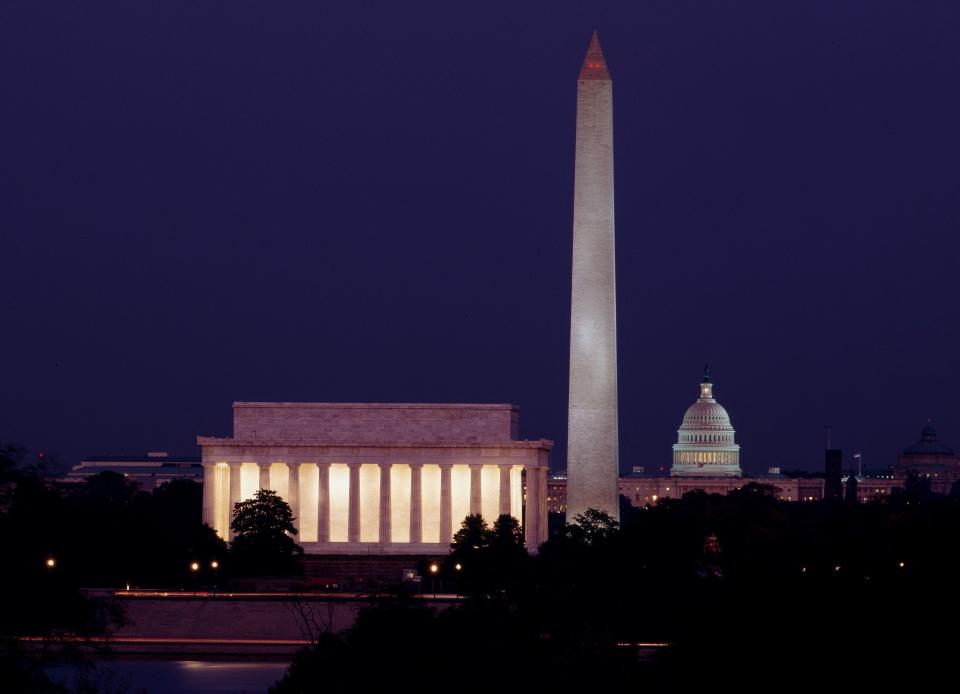The Monday After: Remembering Lincoln with a monument
- Oops!Something went wrong.Please try again later.
- Oops!Something went wrong.Please try again later.

The words that two Ohio presidents spoke a century ago helped consecrate for America the Lincoln Memorial.
When President Warren G. Harding and former President William H. Taft spoke May, 30, 1922, at the dedication of that momument, they also remembered and honored the man for whom the monument was erected – the revered President Abraham Lincoln.
The Evening Repository noted those words 100 years ago, and presented Stark County readers with their first look at the memorial with images on the newspaper's front page.
Former President Taft, as head of the Lincoln Memorial Commission, had "the honor to deliver this Lincoln Memorial into your keeping," he told President Harding in front of a throng of people who gathered to honor the man who "maintained union and nationality" through a war waged between countrymen.
"It is a magnificent gem set in a lovely valley between the hills," said Taft, noting the significance of its location. "Here on the banks of the Potomac, the boundary between the two sections whose conflict made the burden, passion and triumph of his life, it is peculiarly appropriate that it should stand."
Harding gratefully accepted the monument, not just for himself but for his country, he said.
"It is a supreme satisfaction officially to accept on behalf of the government this supurb monument to the savior of the republic," Harding said. "Somehow my emotions incline me to speak simply as a reverent and grateful American rather than one in official responsibility. I am thus inclined because the true measure of Lincoln is in his place today in the heart of American citizenship, though more than half a century has passed since his colossal service and his martyrdom."

Picture captures scope of monument
A "general view" photograph published on the front page of the Repository on June 1, 1922, put into perspective the size of the structure by featuring it as the backdrop to a crowd estimated at 100,000 people who were gathered for its dedication.
"The huge pantheon, costing more than three million dollars, is located on the banks of the Potomac River at the extreme western end of the mall in Potomac Park," the picture's caption said. "The reflection of the classic structure can be seen in the pool (in front of the memorial)."
Lincoln's son, Robert T. Lincoln, was shown in another picture being assisted in walking up the steps leading to his father's memorial.

At the top of the steps, of course, Lincoln saw the iconic statue of his father, sitting posed in a way and carrying an expression, the Repository noted, that the son must often have seen his father carrying "when he sank back in his heavy chair at his desk in the White House and brooded over the havoc that civil war would make."
"The figure is relaxed with arms outspread on the arms of the chair," reported the article about the monument published in the Repository on May 30, 1922. "The wide shoulders are pressed back for support but the head is erect and the quiet, gaunt, deeply-lined face is but the setting of the brooding eyes looking thoughtfully , almost in sorrowing pity over the memories of the scenes they witnessed, of the sorrows they knew."
Memorial service held there
The Civil War was recalled vividly on the day of the Lincoln Memorial's dedication because the occasion also was used for Washington to celebrate Decoration Day, a holiday that had been set aside in 1868 to honor those who had lost their lives during the "War Between the States." It was celebrated on May 30 through 1970, until the name was changed to Memorial Day.
"Foremost among those who gathered at this culminating ceremony of Decoration Day were the aged veterans of the Grand Army of the Republic, men who at Lincoln's call put aside their cittizenship for a little while for the blue of the army uniforms and fought out the question of the American nation as one people under one government," the Repository reported in its article on Mary 30, 1922. "To those old soldiers who knew him and obeyed him in life was given the place of honor in paying this last and greatest tribute to the leader under whom they had served. But with them, as though to give silent evidence of the greatness of his vision, stood other old and feeble men in the gray of the southern Confederacy who also had come to pay homage at Lincoln's feet.
"The uniforms of the veterans ... were mingled with the thousands of Americans who stood to hear what former President Taft and President Harding had to say."
A few final words of respect
Harding spoke to all those gathered, regardless of their side in the Civil War.
"The southerner knows that the greatest misfortune in all the trials of that section was the death of Lincoln," said Taft, with his words and Hardings reported in an article in the Repository on May 31, 1922. "Had he lived, the consequences of the war would not have been as hard for them to bear, the wounds would have been more easily healed, the trying days of reconstruction would have been softened. Rancor and resentment were no part of his nature.
"In all the bitterness of that conflict no word fell from his lips, tried as he was, which told of hatred, malace or unforgiving soul. Here is a shrine at which all can worship. Here is an alter upon which the supreme sacrifice was made in the cause of liberty. Here is a sacred religious refuge in which those who love country and love God can find inspiration and repose."
President Harding noted what historians have since recognized, that preservation of the country was Lincoln's ultimate goal throughout the Civil War.
"Hating human slavery as he did, he doubtless believed in its ultimate abolition through the developing conscience of the American people, but he would have been the last man in the Republic to resort to arms to offset its abolition."
Emancipation was "a means to the great end" and it "maintained union and nationality."
"Abraham Lincoln was no superman. Like the great Washington, whose monumental shaft towers nearby as a fit companion to the memorial we dedicate today, ... Lincoln was a natural human being, with the frailities mixed with the virtues of humanity.
"There are neither supermen nor demi-gods in the government of kingdoms, empires or republics. It will be better for our conception of government and its institutions if we will understand this fact. It is vastly greater than finding the superman if we justify the confidence that our institutions are capable of bringing into authority, in time of stress, men big enough to meet all demands."
Reach Gary at gary.brown.rep@gmail.com. On Twitter: @gbrownREP.

This article originally appeared on The Repository: The Monday After: Remembering Lincoln with a monument

